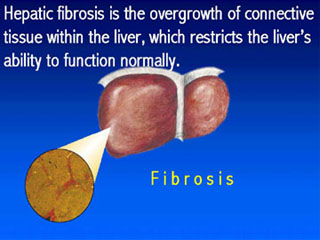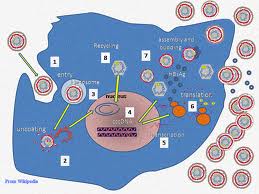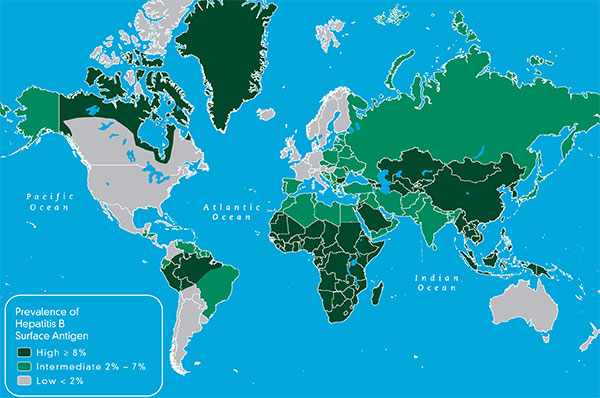The study published by Healio Hepatology, March 8, 2013 discusses the increased risk of mother-to-infant transmission in HBV positive moms who are HBeAg positive and have a high viral load. Current prophylaxis, where infants of HBsAg+ moms receive the first shot of the HBV vaccine and a shot of HBIG within 12 hours of birth, is successful greater than 90% of the time. However, according to the study, HBeAg+ pregnant moms with a viral load above 107 cp/mL(10,000,000 cp/mL) will transmit the virus to their infant despite prophylaxis. Since a particularly elevated viral load appears to determine the failure of current prophylaxis, the need for additional screening for these women and revised intervention strategies is necessary to prevent transmission to their babies at birth.
If you are a pregnant mom that is HBsAg+, please see a liver specialist for further evaluation to determine your HBeAg status and your HBV DNA viral load. If you are HBeAg + and have a high viral load, (a viral load near the 10,000,000 cp/ml threshold) you will want to talk to your liver specialist to determine if you and your baby would benefit from antiviral therapy in order to prevent transmission of HBV to your newborn. Although there are no official guidelines or recommendations, Registry data shows medications for hepatitis B appear safe during pregnancy. Talk to your doctor to see if this is a good option for you and your baby.
If you are a pregnant woman, please read and print HBF’s Chronic Hepatitis B in Pregnancy, and give it to the doctor who will be caring for you during your pregnancy. Sadly, IOM data shows HBV+ women in the U.S. are not always identified and educated about their HBV, and an opportunity for prophylaxis may be missed despite CDC recommendations that ALL infants receive the first dose of the HBV vaccine prior to hospital discharge.
If you live in a developing country, there may be no guidelines in place that automatically screen pregnant women for hepatitis B. Once again, read and print a copy of “Chronic Hepatitis B in Pregnancy” for your doctor. Insist you are screened for HBV, and if you are HBsAg+, please be sure prophylaxis will be available at the hospital where you will give birth to your baby. If you find you are HBeAg+, with a high viral load, please speak to a liver specialist to see if an antiviral is an option for you to prevent HBV transmission to your baby. Don’t’ forget to have your baby tested at 18 months to ensure your baby is HBV free.
*Please note you can convert copies per milliliter (cp/ml) to IU/mL for the article below using WHO’s international standard where 1 IU/mL = 5.2 copies/mL. Please ask your doctor or your lab if you have specific questions regarding the conversion.
Infants born to mothers with a high hepatitis B viral load, particularly those positive for hepatitis B e antigen, are at high risk for contracting hepatitis despite immunoprophylaxis, according to recent results.
Researchers evaluated 303 mother-infant pairs in which mothers tested positive for hepatitis B surface antigen (HBsAg). Maternal viral load and hepatitis B e antigen (HBeAg) status were determined, and children were tested for HBsAg at ages 4 to 8 months (n=250) and/or 1 to 3 years (n=53 for an initial test; n=183 for a follow-up test). All children received HBV vaccine within the first week of birth and at 1 and 6 months, with a 100% completion rate; children born to mothers who tested positive for HBeAg received hepatitis B immunoglobulin within 24 hours of birth.
HBeAg-positive mothers (81 cases) had higher viral loads than those who did not (7.4 ± 1.9 log10 copies/mL vs. 2.7 ± 1.4 log10 copies/mL; P<.0001 for difference). Chronic HBV infection was identified in 10 children, all born to HBeAg-positive mothers with high viral loads (range 6.5-9.5 log10 copies/mL), and all with the same HBV genotypes and subtypes as their mothers.
Investigators identified a significant association between maternal viral load and a child’s risk for infection via multivariate analysis, after adjusting for factors including age; birth type; infant gender, weight and gestational age, and feeding practices (adjusted OR=3.49; 95% CI, 1.63-.7.48 per log10 copy/mL increase). Predictive rates for maternally transmitted HBV infection were found to be statistically significant at 7 (6.6%; P=.033), 8 (14.6%; P=.001), and 9 (27.7%; P<.001) log10 copies/mL.
“High maternal viral load is the most important factor causing maternally transmitted HBV infection, and is significantly correlated with maternal HBeAg status,” the researchers wrote. “Our predictive model including multiple risk factors showed that children with a maternal viral load above 10,000,000 to 100,000,000 copies/mL (or would have a significant risk of infection despite immunoprophylaxis. Our data provide important information for the rational design of future screening and intervention strategies to further reduce maternally transmitted HBV infection.”
Wen W-H. J Hepatol. 2013;doi:10.1016/j.jhep.2013.02.015.
March 8, 2013











